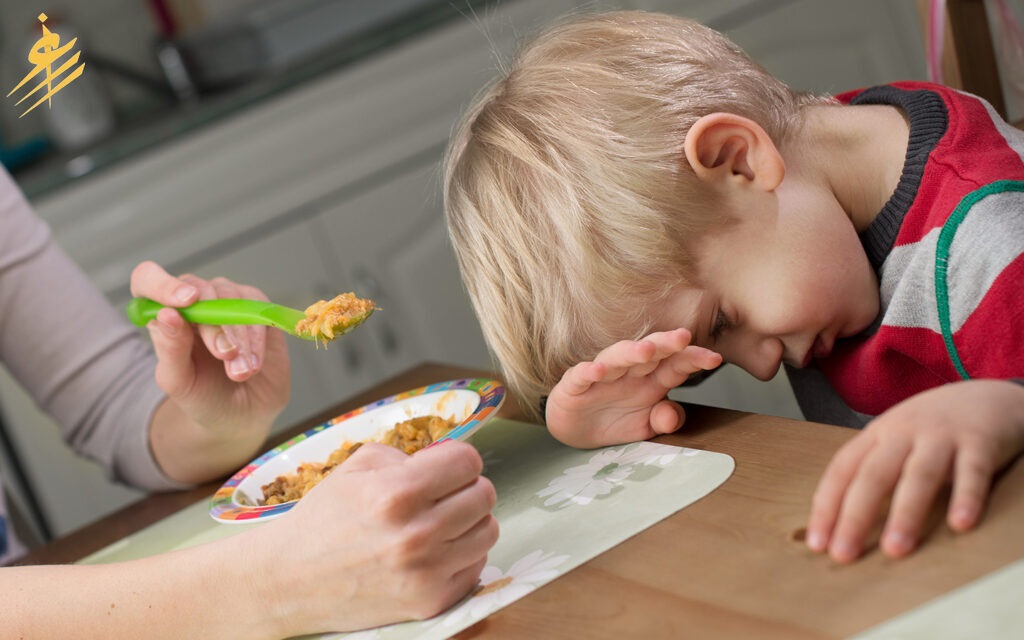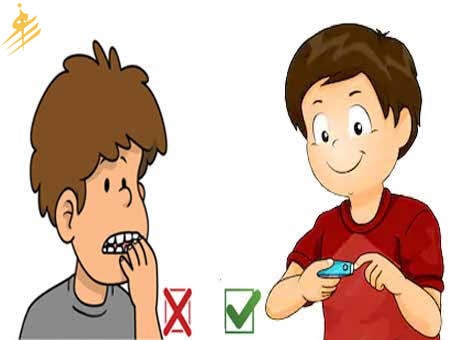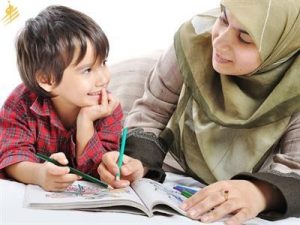Parents in the modern era are keen to teach their children sound education, which makes them grow up distinctive and civilized since their childhood, especially in the period in which the child’s independent personality is formed, and one of the correct methods of education is to teach the child the rules of etiquette, which has become a feature of the modern era in light of the development that the world is currently witnessing, and we will explain in this article how to teach etiquette to the child in all his lifestyles, whether in talking, eating or in any matter of affairs His daily life.
What is etiquette?
- Etiquette is defined as the art of good qualities or polite behavior, as well as good morals that everyone should learn, whether adults or children.
- Etiquette contains a number of principles and rules, whether they are unwritten or written in events, compliments and social banquets.
- Etiquette rules are good morals that combine beauty, sophistication and simplicity.
- Everyone, whether old or young, must be committed to learning etiquette and using it in their daily lives.
You can also read about: Mother of the Believers Aisha bint Abi Bakr.
How to teach etiquette to a child
There are a lot of basics that a child must learn to increase his etiquette skill, especially since the young child resorts to sharing everything that happens around him, especially from his parents who depend on them in his life where they are role models for him, and we will explain these basics that must be taught to the child and how to teach etiquette to the child.

Praise the good behavior of the child
- One of the most important principles of how to teach etiquette to a child that makes him feel valued in society.
- When a child behaves in a distinctive or positive way, he should be praised appropriately in order to motivate him.
- For example, “Thanks for this great attitude, I’m happy for that.”
- The older child can be praised and thanked in case he does something good such as putting the phone aside away from the dining table.
- You should not increase the praise of the adolescent, especially while being with others, as this may cause distress to him.
Showing a good example to the child
- Another principle of teaching etiquette to a child is to give the good example that the child is looking for in his life.
- The child always looks at parents and considers them the right role model for him and imitates them in everything.
- So parents should be role models for the child such as doing good things that make him imitate them appropriately.
- All etiquette of talking or eating can be clarified while sitting at the table.
- The child can interact with close family members.
- Send thank you messages to the child, and show appreciation in case something perfect and wonderful is done.
- Speak politely in front of the child so that he behaves the same.
- In the event that the child makes a birthday, he should be taught the etiquette of thanking guests for gifts, as well as the etiquette of opening gifts.
- You should not be nervous and overstep in talking to others in front of the child so that he does not imitate the appearance that appeared in front of him.
- Sit down with the child and talk to him, helping him to get the right behavior appropriately in many ways.
Provide an explanation of behavior
- One of the most important foundations of how to teach etiquette to a child is to explain his behavior appropriately.
- For example, if a child chews food with his mouth open, talk to him and explain the behavior well and it is clarified that people should not see food inside the mouth.
- If the child behaves inappropriately, he should talk and explain the matter to him in a simplified manner.
- The child’s age must be taken into account and good morals should be explained to him according to his age and he is not given big advice on his age, as only the most appropriate should be chosen.
- You can go out with the child and go to the library, restaurants as well as the shopping center in order to practice the rules of etiquette that he taught with people in these places.
- One of the most important words that a child should learn and use in these places is excuse me, thank you, allow me and please.
Teaching the child the etiquette of dinning table

- Many situations occur on the table, so you should pay attention to them in order to know how to teach etiquette to the child.
- Parents should teach the child everything to do from the beginning of sitting at the table until the food is finished and done.
- All etiquette should be spelled out in a simplified and uncomplicated form so that the child does not feel complicated and a lot of information that needs to be learned at once.
- It is necessary to teach the child advanced skills because food etiquette must be known to all of them, especially in light of sitting with his friends or family at the table in a large way.
You can also read about: Etiquettes of eating and drinking for children.
Teaching the child some principles of the physical characteristics of others
- One of the most difficult things in life that many suffer from, and parents must teach the child how to deal with it so that he can know how to teach etiquette to the child.
- Parents should teach the child some rules of etiquette that relate not to comment on other people’s physical characteristics.
- There may be some people with health problems that make there are some involuntary movements in front of the child.
- This kind of thing is bullying, it should not be done and should be avoided in order not to cause distress to others.
- The child should be taught not to make fun of friends or anyone in general.
- You should not harass others or calibrate their helplessness, and you should not ally with anyone against the friend because it is difficult for them.
Quickly correct child mistakes
- A big task of parents that shows how to teach etiquette to a child.
- Since the child is young and does not understand all the rules of etiquette and general principles, you should not be silent in the event of any wrong behavior.
- If there is an inappropriate behavior by the child, parents should start correcting it in a way that does not cause embarrassment to either party.
- In the event that the child is talking to his friend, the child must be assured not to interrupt him until he has finished talking or asking permission to talk.
- Delivering to the child the concept of boycott is inappropriate.
The need to leave shoes at the doors
- This is not only one of the principles of teaching etiquette to the child, but it is evidence of the child’s personal hygiene while going to wherever he goes and clarifying the principles of his upbringing in front of others.
- The child should be instructed to leave the shoes at the door so that no dirt occurs in the host’s house.
- Not leaving shoes outside causes distress for homeowners making them unwelcome to guests.
Not open the closed doors
- Among the most important principles related to how to teach etiquette to a child, which preserves the privacy of individuals greatly.
- The child should be warned not to be too curious.
- This curiosity may lead him to open any closed door in any house he is heading to.
- The child must be taught that homes are secrets, and the secrets of others should not be interfered with until the owner of the house gives permission.
Food Etiquette for children
There are some rules that must be taught to the child while at the dining table in order to eat meals, as this is considered one of the most important rules regarding how to teach etiquette to the child, and it is clear in the following:
- Do not sit on the table without going to wash hands and face and make sure of his good appearance, this habit is not only a rule of etiquette but a healthy habit for the personal hygiene of the child.
- Ask the person preparing the food whether they need help or not, whether it is inside the child’s house or in someone else’s house, whether relatives or friends.
- Help clean the dining table and put all things in their proper place, as they can put water on the left of the table, bread on the right and so on, the fork can be placed and the knife in order to increase the organization process.
- Eating will not be started before the homeowner or host begins to prepare for food.
- Do not fill the mouth too much and a small amount must be taken inside the mouth as not to appear inappropriate in front of others.
- Do not chew food with your mouth open.
- Do not talk while eating or if your mouth is full of food.
- Do not interrupt anyone else’s talk and wait for the turn to talk and do not race to say what is on the mind.
- Refrain from reaching out to the table to get something from food and you should go to the closest thing to the child.
- Use some words like thank you and please in order to serve food to the child.
- Do not criticize about the food any way.
- Sit near to the food.
- Asking permission in case of finishing food in order to get up from the table.
- After the food is finished, the child’s napkin is placed on the chair and it is not placed on the table or plate.
- The chair is pushed inside after getting up from the table and finishing the food.
- Participate in the child’s cleaning of the table by lifting the plate in which he ate and say thank you to the host or the person who submitted the appeal to him.

Islamic etiquette for the child while eating
The Islamic curriculum is always the approach that we follow in our daily lives and through it it is possible to know how to teach etiquette to the child, as there are some Islamic rules for etiquette that the child must perform while sitting at the dining table, whether in his home or in another house, which are as follows:
- Starting the food with “In the name of Allah, the Most Gracious, the Most Merciful” and ending the food with “Praise be to Allah”.
- Eating with the right hand and not using the left hand while eating.
- Eating from the near side of the child, not looking at the far side.
- Maintaining health by eating enough, and not addressing overeating which causes fullness.
Voice etiquette for the child

Parents should clarify some important rules that are related to the child’s voice etiquette during talking, which is one of the types of etiquette for the child, as follows:
- The child spoke in a clear voice so that the person sitting in front of him could understand what he was saying.
- Ensure the quality of word exits so that the words are issued correctly.
- The tone of voice should be medium, neither high nor low, because the loud voice is evidence of the child’s lack of respect for those in front of him and low voice makes the listener not understand clearly.
- Learn the principles and etiquette of listening to other people.
- Do not interrupt the person who is talking, do not have side conversations with other people within the group, and do not whisper between any two parties.
Movement etiquette for children
There are some rules related to movement etiquette in children, which they must adhere to in order to know how to teach etiquette to the child and these rules are as follows:
- Body movement is what gives the child his elegance, whether in sitting, standing, walking or movement in general.
- A girl must learn how to stand gracefully without any mockery of others or swaying abnormally, i.e. she must stand slender.
- Make sure to place the right foot in front of the left foot.
- While walking, the steps must be precise and calculated and not attract attention and not be fast in steps or slow to cause attention.
- The recommended steps can be learned by performing the exercises by drawing a line on the ground and walking on it with quiet steps and not rubbing the foot directly with the ground so as not to cause any sound.
- In order for the girl to be slim and her back straight, a stick is placed behind the arm and she walks in this way in an elegant and wonderful way.
- A book can also be placed on the head to maintain its balance and the girl does not beat it with a flat back like a model’s workouts.
- The child must also learn the etiquette of sitting and walking, where he must walk straight back with appropriate and strong steps and not slow down in walking and does not rub his feet with the ground.
- While sitting, the child should not slip into it, whether for male or female.
- While sitting, feet should be bandaged and hands on legs.
The difference between protocol and etiquette
Many people in the world cannot distinguish between protocol and etiquette and think that they are one thing in terms of achieving good principles and qualities, but in fact they are different from each other as follows:
- The protocol is some rules known to everyone, and it is written down and close to the official things that everyone must implement and it is imposed on them in the place designated for that and it is not considered one of the rules on how to teach etiquette to the child.
- While etiquette is the rules on which the child grows up until he grows up, and concerns the treatment, the way of talking with others, table etiquette and other qualities that are acquired by learning and are not imposed on people and are not written because they relate to the internal feelings of the individual.
When is the word “no” considered a rule of etiquette
Naturally, the word “no” is not considered one of the rules of etiquette, because it means that you impose something on the child strongly and must be adhered to, but at times it must be said in order to achieve the principles of how to teach etiquette to the child, while the child is doing some bad morals, whether at home or abroad, and these morals are as follows:
- The child throws objects in anger.
- Sneezing and coughing in the face of the person in front of the child.
- Spitting either on the ground or on anyone present.
- Deliberately ejecting gases.
- Bullying other children or people in general.
- Calling a person by an inappropriate name.
- Improper contact with others. Pushing others or stampeding between people.
- Begging and asking for money from others.
- Interrupt the person’s speech inappropriately.
- Savagely snatch something from anyone.
How to teach etiquette to a child is an important necessity that all parents must know so that the child appears appropriately in front of everyone, and all parents must know that teaching etiquette to the child is not related to his young age, but it is related to the extent of his understanding of things and his awareness, and they must also implement the rules of etiquette in front of him because the child takes all his actions from his parents, because the child may fall into confusion between the instructions provided by his parents and their actions.
You can take advantage of special courses and training programs in jeras app, which will definitely suit your child after clicking here.






